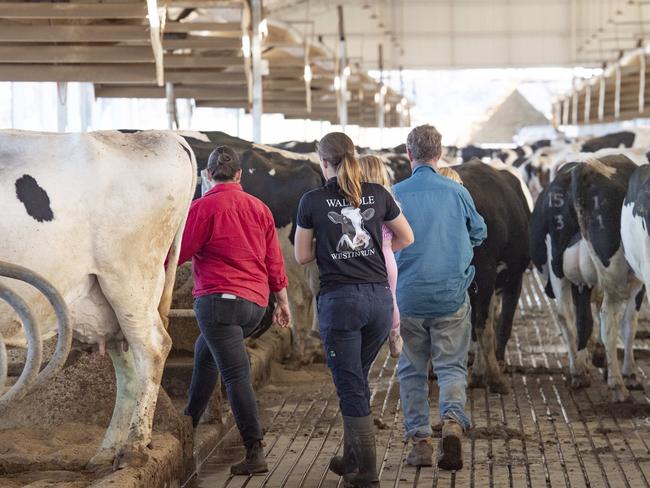Global Dairy Trade: China ends dairy diet in trade upswing
China is consuming dairy with renewed vigour, with a welcome lift on the Global Dairy Trade index.
China is back to dairy consumption with renewed vigour, with a welcome lift on the Global Dairy Trade index.
The GDT headline figure now sits at $US2957 ($A4583), up 4.6 per cent from last fortnight’s modestly improved result of $US2875 ($A4555) per tonne.
Whole milk powder lifted by 4.6 per cent in overnight trade, providing New Zealand farmers some respite ahead of Fonterra’s scheduled release of its annual results tomorrow.
But one of the key commodities for Australia, cheddar, was down 1.7 per cent, at a time when increasing volumes of NZ cheese are being on-sold to Australian supermarkets and the hospitality sector.
Fonterra co-operative affairs chief Mike Cronin said Chinese buyers made up 67 per cent of all GDT purchasing in the latest trading session, up from 27 per cent a fortnight ago.
He said the latest figures indicated China’s dairy diet may be coming to an end.
“We are seeing a little bit of pressure on production in New Zealand,” Mr Cronin said.
“Around the world, the EU is coming down, the US is coming down (on production), so there’s a little bit of pressure on supply.
“So some positive signs on China, looking like they may be finished drying off their local milk and whole milk powder.
“Participation (in GDT purchasing) especially around whole milk powder, 67 per cent China participation, up from 27 per cent participation last time.”

The latest Bureau of Statistics data shows NZ butter shipments are up 62 per cent in just 12 months to the end of June; milk is up 74 per cent; and even ice cream, up 105 per cent.
Westpac agri-economist Nathan Penny urged caution over the latest upswing, saying the 4.6 per cent rise in the GDT headline figure did not yet indicate a trend.
He said further price lifts into October would provide greater certainty for dairy farmers on both sides of the Tasman.
“Prices appear to be finding a bottom after a sustained run of price falls,” Mr Penny said. “However, the spring peak in local production is around the corner and its strength or otherwise will provide fresh direction to prices.”





